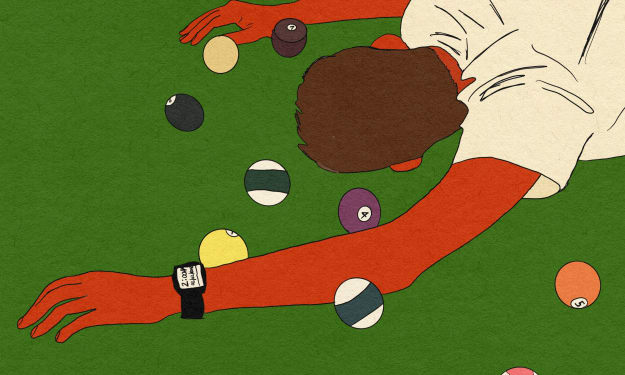7 Factors to Consider When Choosing Drawing Paper
Key Considerations for Selecting the Perfect Drawing Paper

Drawing is an essential art medium that promotes creativity and self-expression. The texture, longevity, and general look of your drawings are greatly impacted by the quality of the paper you use for your artwork.
Using good drawing paper will improve your drawing techniques and help you save your work for a long time. Therefore, for your artwork to last a lifetime and to produce the ideal effects, choosing the correct drawing paper is crucial.
Here are seven important factors you must consider while selecting the drawing paper for your drawings.
1. Paper Weight
One of the most essential features of drawing paper is its thickness, expressed in pounds or grams per square inch.
Thicker, dense papers are ideal for techniques and different media like watercolor, inks, and mixed media. Meanwhile, thinner papers are more delicate when working with dry media such as pencil, charcoal, and pastel.
It is crucial to choose the drawing paper that can support your preferred medium without warping.
2. Texture
When it comes to the surface quality of the drawing paper, one can refer to it as the texture or tooth of the material. Papers can be smooth (hot-pressed) or rough (cold-pressed).
Smooth papers are ideal for developing finer lines such as shades, hatching, or inking in comparison to rough paper, which is ideal for bold strokes as well as textures.
Rough paper is comparatively coarser in texture and are suitable for uses like charcoal, pastel, or watercolor since these papers hold more pigments or create interesting effects.
Choosing the right texture or ‘tooth’ of the boiling paper depends on the types of material you plan to use in your art and how you want your completed piece of art to look like.
3. Color and Tone
Drawing papers come in different tones and colors. White, mostly used by artists and school children, offers a neutral background to your art and helps its color shine.
You are advised to opt for drawing papers that are white or off-white in color. This is because these two colors give a softer appearance, which lessens the strain on the eyes when drawing for longer hours.
Moreover, you can also experiment with various colored drawing papers to give your artwork a twist.
4. Acid-Free and Archival Quality
It is imperative that artists use archival-quality, acid-free paper if they are worried about the lifetime of their work. The neutral pH of acid-free paper keeps it from degrading or becoming yellow over time.
Your artwork will stay bright and undamaged for decades to come, thanks to archival-quality papers, which are designed to withstand considerable deterioration over time.
For working artists who plan to sell their creations or for items kept in storage for a long time, these documents are crucial.
5. Size and Format
Sketchbooks and big sheets and rolls are only two examples of the many shapes and sizes of drawing paper. The measurements of your art may vary depending on the paper’s dimensions.
Larger sheets of drawing paper offer more space for intricate designs, whereas smaller sheets work well for quick sketches and study.
Picking the right size requires considering the art you choose to make and your workplace and storage. Although sketchbooks are more portable and convenient for some artists, others prefer to work on loose pages that they may clip down to a drawing board.
6. Medium Compatibility
Certain media suit certain periodicals better than others. For instance, because of its smooth surface, Bristol board works well for pen and ink work, yet rougher watercolor paper works better with wet media since it can absorb water without buckling.
For holding their pigment, pastel, and charcoal, painters frequently choose paper with a large tooth. Picking paper should take into account the media you will be utilizing the most and make sure the paper you select complements that medium.
Use the suggestions provided by several manufacturers for the types of media that are most suited for their papers.
7. Price and Availability
And last, especially for enthusiasts and students, the price and accessibility of drawing paper might be decisive factors. Specialty papers of high caliber can be costly, and even though they perform better, they might not always be required for exercises and research.
There are still many inexpensive alternatives that offer excellent daily performance. Trying several brands and varieties of paper is usually a smart idea to determine what your demands are in terms of cost and quality.
Conclusion
In order to satisfy your creative goals and tastes, selecting the ideal drawing paper requires balancing a number of aspects.
Making educated choices and improving your artwork will be made easier if you comprehend the significance of factors like paper weight, texture, color, archival quality, size, compatibility with other media, and cost.
Changing out the materials you use to experiment with might also help you express yourself more creatively. You can ensure that your art stays colorful and impactful for years to come by taking the time to choose the correct paper, which may significantly affect the quality and lifespan of your work.
About the Creator
Enjoyed the story? Support the Creator.
Subscribe for free to receive all their stories in your feed. You could also pledge your support or give them a one-off tip, letting them know you appreciate their work.





Comments
There are no comments for this story
Be the first to respond and start the conversation.